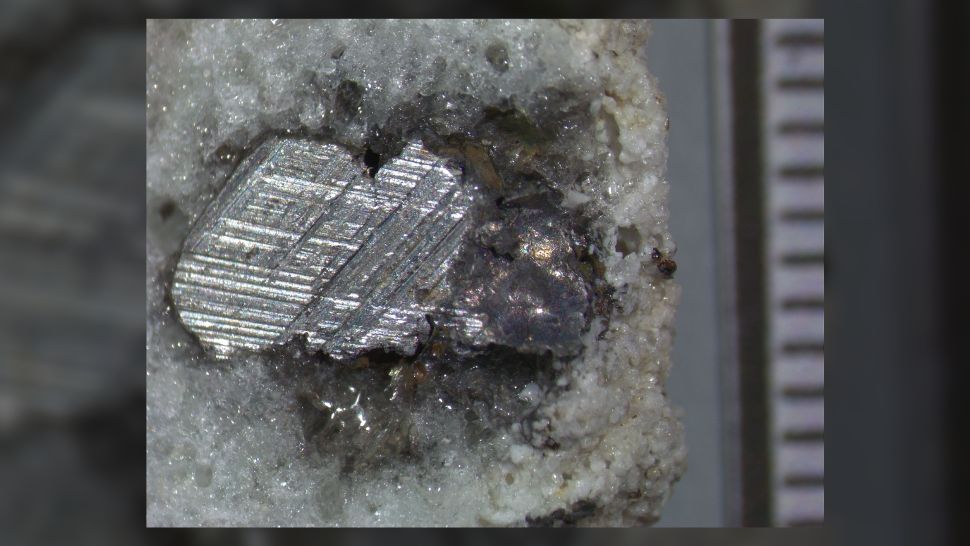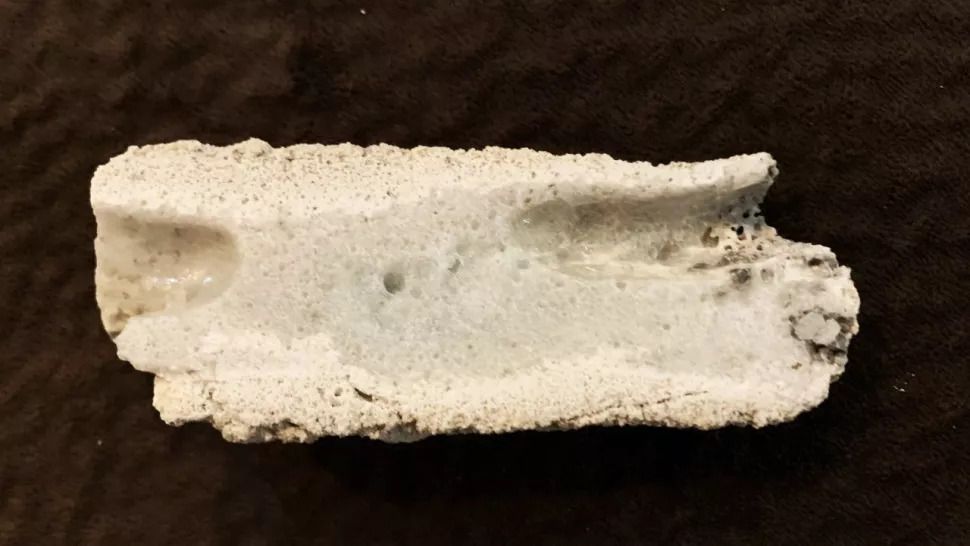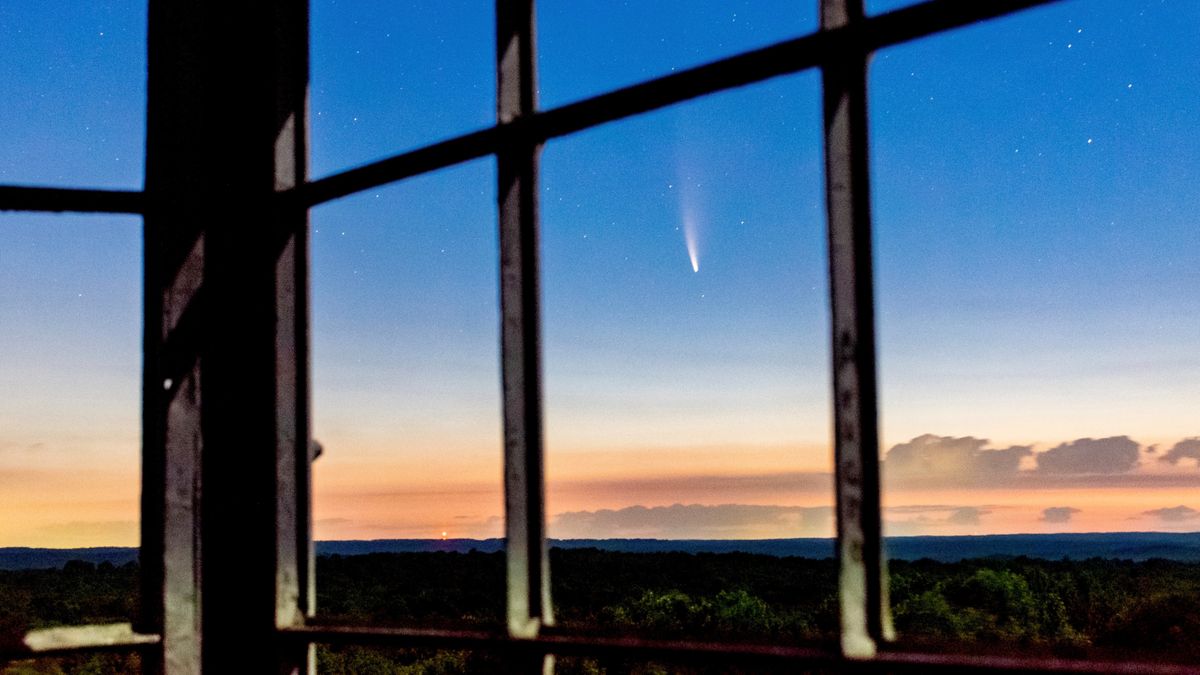A tube of “fossilized lightning” from Nebraska’s Sandhills holds a rare type of quasicrystal that had previously only been found in meteorites and at atomic bomb test sites.
Quasicrystals are materials that break the traditional rules of crystallography. Before they were first reported in 1984, scientists thought materials could either be crystalline — with symmetrical, repeating patterns — or amorphous, meaning randomly arranged and disordered. In addition, scientists believed crystals could only be symmetrical a limited number of times when rotated around an axis — two, three, four or six times.
Quasicrystals break those rules. They’re put together in an ordered pattern, but that pattern does repeat. They also have rotational symmetries that no ordinary crystal can achieve. A quasicrystal with icosahedral symmetry, for example, can display five-fold symmetry around six different lines of rotation.
Related: Red lightning: The electrifying weather phenomenon explained
Quasicrystals were first discovered in the laboratory. In 2012, however, Paul Steinhardt (opens in new tab), a theoretical physicist at Princeton University, and Luca Bindi (opens in new tab), a geoscientist at the University of Florence in Italy, announced the discovery (opens in new tab) of a natural quasicrystal in a meteorite that fell on the Kamchatka Peninsula in northeastern Russia. The researchers then created more quasicrystals in the lab by mimicking the high temperatures and high pressures that might be found when rocky bodies collide. They then turned to another place where a very rapid transition to high temperature and high pressure occurred: the Trinity atomic bomb test site in New Mexico. There, they found more quasicrystals in minerals from beneath where the atomic bomb exploded.
“For this reason, I started to think of other materials formed in similar conditions. And I thought of fulgurites, materials formed by lightning strikes,” Bindi told our sister website Live Science in an email.
(opens in new tab)
Dramatic discharge
Fulgurites form when lightning hits sand, fusing together the grains in a gnarly, branching tube of glass. Bindi collected multiple fulgurites in his search for quasicrystals. The one that held this rare form of matter came from the Sandhills of Nebraska, near the village of Hyannis. This area of Nebraska is made up of grass-covered sand dunes.
The fulgurite was found near a power line that went down in a storm in 2008. In total, it was about 6.6 feet (2 meters) long and up to 3.1 inches (8 centimeters) in diameter. No one witnessed the event, so the researchers aren’t sure whether lightning struck the power line and created the fulgurite, or whether the line went down in the wind and created the fulgurite with its own electrical discharge.

(opens in new tab)
Either way, the resulting branched glass contained a mixture of materials from the sand and the metals in the electrical line, including manganese, silicon, chromium, aluminum and nickel. To meld these materials, the temperature of the sand must have briefly reached at least 3,110 degrees Fahrenheit (1,710 degrees Celsius), the researchers reported Dec. 27 in the journal Proceedings of the National Academy of Sciences (opens in new tab).
Hunting for quasicrystals
Using a scanning electron microscope, Bindi, Steinhardt and their colleagues found a 12-sided, 12-angled crystal with 12-fold symmetry embedded in the fulgurite. Quasicrystals with this sort of symmetry are even rarer than quasicrystals in general, the researchers wrote in their paper; quasicrystals with 10-fold symmetry or icosahedral symmetry are more common.
The discovery points to new places to look for natural quasicrystals, Bindi said.
“It demonstrates that transient extreme pressure-temperature conditions are suitable for the synthesis of quasicrystals,” he said. Other potential places to find quasicrystals, he said, might be in impact glasses formed when large meteorites or asteroids hit Earth, or in parts of the moon‘s surface that have been hit by asteroids.














